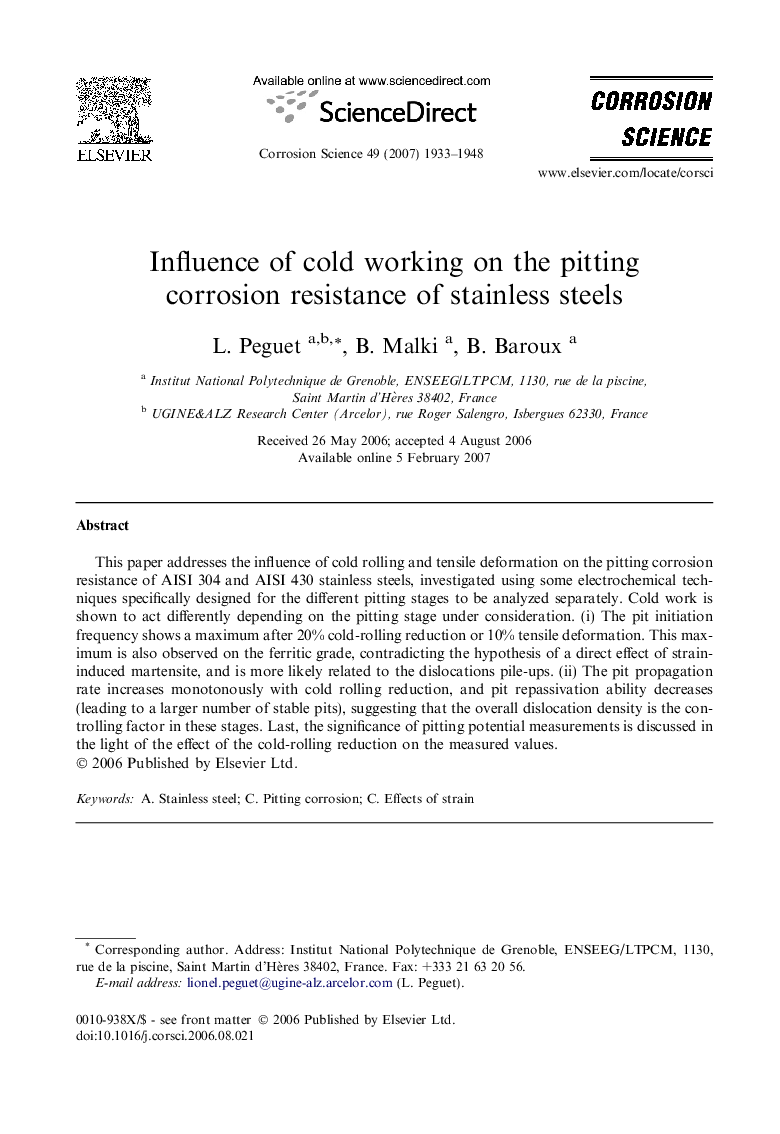| Article ID | Journal | Published Year | Pages | File Type |
|---|---|---|---|---|
| 1471968 | Corrosion Science | 2007 | 16 Pages |
This paper addresses the influence of cold rolling and tensile deformation on the pitting corrosion resistance of AISI 304 and AISI 430 stainless steels, investigated using some electrochemical techniques specifically designed for the different pitting stages to be analyzed separately. Cold work is shown to act differently depending on the pitting stage under consideration. (i) The pit initiation frequency shows a maximum after 20% cold-rolling reduction or 10% tensile deformation. This maximum is also observed on the ferritic grade, contradicting the hypothesis of a direct effect of strain-induced martensite, and is more likely related to the dislocations pile-ups. (ii) The pit propagation rate increases monotonously with cold rolling reduction, and pit repassivation ability decreases (leading to a larger number of stable pits), suggesting that the overall dislocation density is the controlling factor in these stages. Last, the significance of pitting potential measurements is discussed in the light of the effect of the cold-rolling reduction on the measured values.
